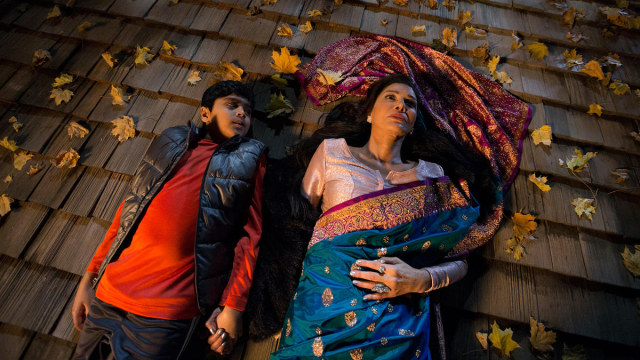Over the last couple of seasons of television, critics and audiences have begun to pay a considerable amount of attention to the role of women and racial diversity on their favourite shows. Despite being set in the future, science fiction television has often been stubbornly stuck in the past. With its latest lineup, however, the Syfy channel has demonstrated that a proactive approach can create lasting change.
Lead image: Syfy
While visiting the sets of Dark Matter and Killjoys, I spent some time chatting with a fellow journalist, where we began to talk about how the channel’s new slate of shows had demonstrated some considerable changes in the science fiction world: across The Expanse, Dark Matter, Killjoys and 12 Monkeys, women and people of colour were cast in lead or in prominent roles, with particular attention being paid to underprivileged groups in many instances. Recently, spoke with the showrunners of each production about their approach to envisioning their respective futures.
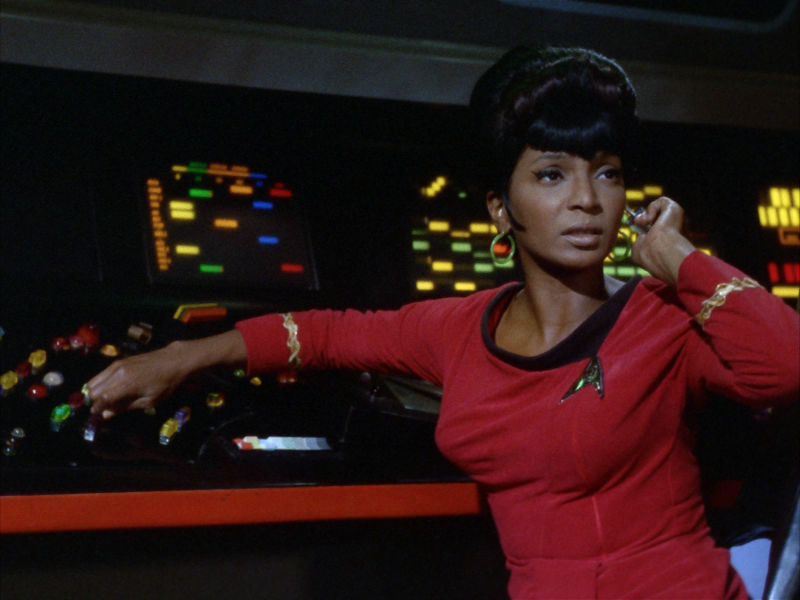
Image: Paramount
This isn’t a new set of changes: there’s been a number of notable examples lately where there have been some conscious decisions made during the casting phase of productions: just look at the cast of Star Wars: The Force Awakens, of Ghostbusters or of Orphan Black. Going even further back, there’s iconic characters such as Samantha Carter in the Stargate franchise, Commander Susan Ivanova of Babylon 5 and Lt. Nyota Uhura in Star Trek: female characters who have become iconic representations of a more representative future.
In 2013, the Syfy channel underwent some changes, with programming changes that brought along its current slate of programming. With these new shows came a new focus on presenting a diverse cast. Some of the network’s latest offerings, such as Twelve Monkeys, The Expanse, Dark Matter, Killjoys, and Wynonna Earp each prominently feature women and a diverse cast. It’s a positive and progressive step forward within science fiction television, but their actions show that this isn’t something that happens by accident: it’s a deliberate series of decisions that are made to make this happen.
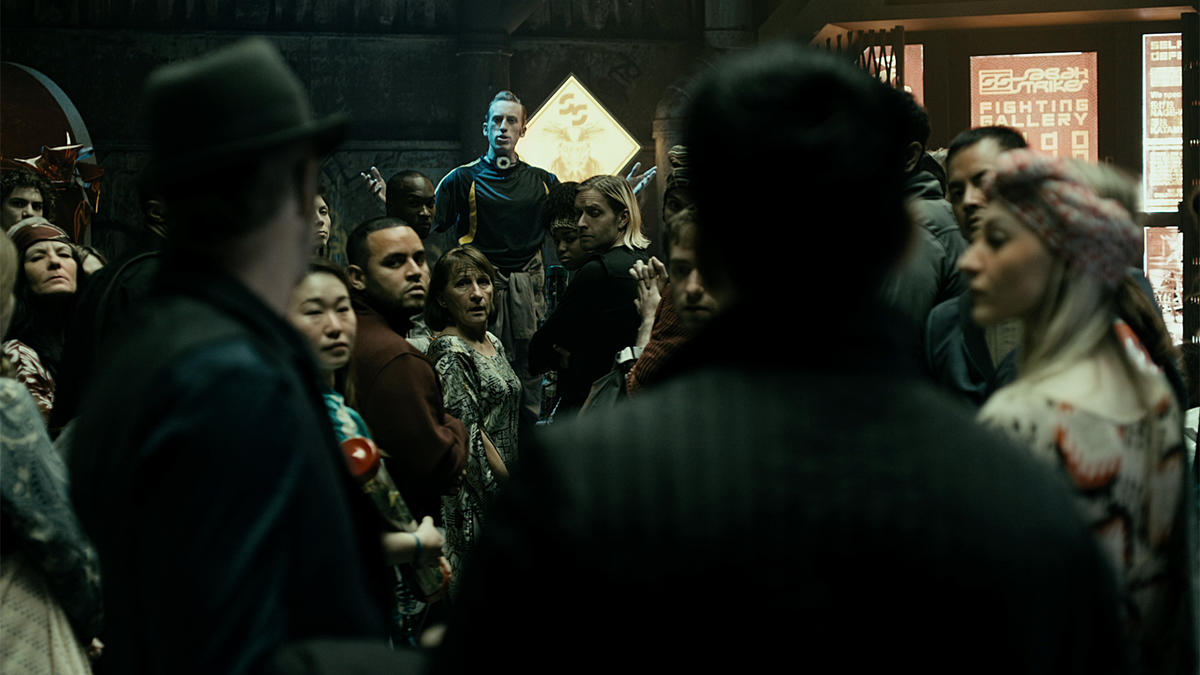
Image: Syfy
During the opening of Dulcinea, the first episode of The Expanse, we’re treated to a voiceover from a man with a heavily accented speech.
But the immense resources and wealth that flow through our gates aren’t meant for us. Belters work the docks, loading and unloading precious cargo. We fix the filters and the pipes that keep this world living and breathing. We belters toil and suffer, with our hope and without end. And for what? One day Mars will use its might to wrest Ceres from Earth, and Earth will go to war to take it back. It’s all the same to us: no matter who controls Ceres, our home, we will always be slaves. That’s all we are to the Earthers and dusters. They built the solar system on our backs.
The scene passes from space and dives into Ceres station, flying through hangers and vents and living spaces, showing off the spectrum of the station’s inhabitants, from the ultra wealthy, with open spaces and grass, to grimy, poor market spaces. By the time we reach the belter speaking out against Earth and Mars, one can pick out the mix of ethnicities represented in the crowd, and a new distinguishing factor which will become a key element of the show: the belters themselves: in the low gravity of Ceres Station, they have grown tall and spindly: they also can’t return humanity’s home planet, as we watch Chrisjen Avasarala torture a belter spy by simply bringing him down to the planet’s surface.
The novels that make up The Expanse placed racial and wealth inequality as a key element of the story running in the background, while the adaptation has placed it firmly in the forefront: racial and economic tensions are a major part of what’s driving the story.
Mark Fergus, one of The Expanse’s showrunners told io9 that the books had laid much of the groundwork when it came to how the television adaptation depicted its future inhabited solar system:
“James S.A. Corey (Ty & Daniel) did much of the work for us in this regard. Characters like Chrisjen Avasarala, Naomi Nagata, Julie Mao and Bobbie Draper are already front and center in the novels. Corey was interested in portraying a world where the human race had evolved beyond sexism — only to be replaced by more ‘evolved’ expressions of hatred and racism. Ah, humanity.”
When it came to adapting the books, they approached the world in an unconventional way: ignoring all of the modern attitudes and build their own attitudes:
“An unexpected challenge of capturing Corey’s world view on screen, was to make a conscious effort to pare away the sexual politics and attitudes of today. This was especially important during the script writing stage of the process — we often needed to steer the reader away from modern-day reactions, that if left uncommented, would play against the intentions of a scene.”
Even as the network was presenting a diverse future, Fergus told us that the story was first and foremost. “It’s sometimes a slippery slope. In Season One, we changed one important, but minor character’s race, and some fans were pissed off. We had a very specific story reason for making this change — added to which, the best actor we auditioned happened to be of a different race. In the end, the story wins. You cast who best tells the story.”
This isn’t strictly limited to the network’s flagship show, either. Last year’s show Killjoys presented viewers with Dutch, a bounty hunter who tracked down warrants for a living, a character who can hold her own with the likes of Sam Carter or Susan Ivanova.
Killjoys doesn’t stop there: the show’s entire first season looks back at the idea of wealth inequality and race. Set in The Quad, a trio of moons and parent planet, the world in which the show inhabits is stratified. The wealthiest live on Qresh, an Earth-like planet, where the undesirables and waste is exported. Westerly, one of the planet’s moons, has been strip-mined by the company for years, leaving it a toxic wasteland, while Leith is the system’s bread-basket, where workers are tagged and killed if they attempt to escape. Its inhabitants etch out a meager living, hoping to be rewarded after years of labour by an access pass to the planet.
Killjoys‘ creator Michelle Lovretta said that the show in part came to be to address some things that troubled her as a girl reading science fiction. “If you look at season 1, look at the teaser.” She noted when asked about what things in science fiction bothered her during our trip up to Toronto. In the opening moments of Killjoys, we’re introduced to John after he’s been captured, while Dutch is brought in and threatened by a group of gangsters.
“The whole show was set up basically to spin a trope of bring in a woman and threaten rape on her. And that’s her story. Except I say ‘Fuck you.’ Her story is you’re going to bring her in and this is my plan, and I am the boss, and I’m going to take this and have an entire journey come from that, and that was really from a lot of stuff I saw as a young girl. You’re changing the channel and you see these things: the old Bronson movies, etc. You’re like ‘No, I don’t want that, I don’t want to live in a world like that, and I don’t want to pretend that that’s ok. So I flip it and as long as I do it in a way that I’m having fun, and the purpose of it is to entertain, then I’m good with it.”
Lovretta’s motivations for the show stemmed out of her desire to see a very different world than what she had read and watched in science fiction. “I don’t want to just meet myself.” she noted, “I don’t want to meet people who look like myself. I don’t just want to meet people who have sex the way that I do; I don’t like that world. I like a world that is full-bodied and has a lot of variety in it and that’s also something that we kind of commit to trying to do, because there’s nothing more boring and bland and sameless, and if you want to be bland, you shouldn’t be in sci-fi.”
Furthermore, she envisioned that the show featured a woman of colour from the onset. “When I first pitched the show concept there hadn’t been a spaceship show on the air in years, so I was already anticipating a tough sell.” Lovretta told us in a recent interview. “On top of that, I was insisting on a WOC at the ship’s helm, which hadn’t exactly been done a million times. But Syfy was fully behind Dutch from the start, and together we made a conscious effort towards casting a diverse lead.”
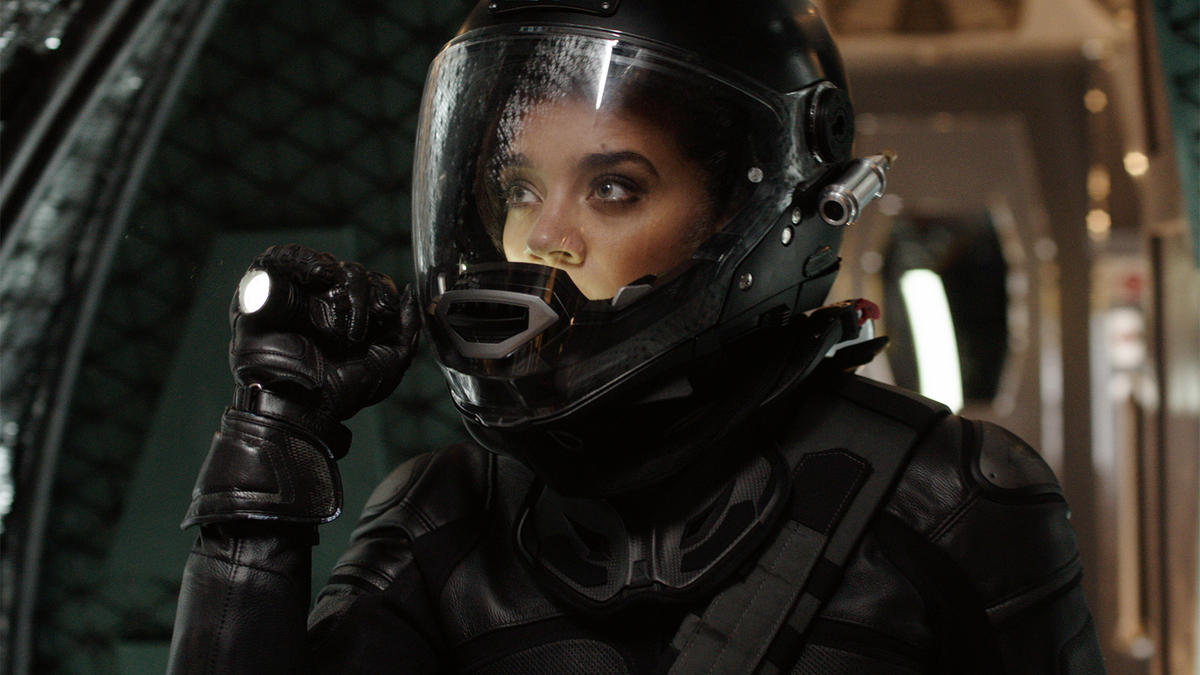
Image: Syfy
In addition to presenting a world that was more inclusive when it came to gender and race, Killjoys (and her earlier show, Lost Girl) sought to present more inclusive viewpoints when it came to sexual attitudes:
“It’s my worldview. I’m an intensely non-political person, its when I tell a story, It has to come from my heart and it has to be something I believe there’s a kindness to it. There’s a lot of science fiction and there’s a lot of horror that comes from a place of darkness and it comes from a place of nihilism, and I’m just really frickin’ chipper. So, I can’t do that. I don’t want to watch that; I don’t want to make that, so often the people in my world have liberties, because I want to live in a world that grants those, and I don’t know why we wouldn’t. I don’t find that scary, I don’t find the idea of granting rights to the people around me as long as they don’t shit on me in the process, a scary thing, and so the worlds that I create are people who remind me of people that I work with, the people I grew up with and I went to school with, and it would feel fake to me to not have them around. So I don’t put them there for a purpose: I put them there because they have always been there, and it would feel like I was editing if I didn’t have them.”

Image: Syfy
The third space opera offering from Syfy is Dark Matter, which follows the crew of the Raza as they attempt to figure out who they were before their memories were wiped, and how to survive to complete their next job.
Creator Joseph Mallozzi came up with the idea of the show while working on Stargate SG-1, and put his original script together into a comic book, which was published by Dark Horse Comics before it was turned into the current iteration running on the Syfy Channel.
The comic book Mallozzi put together had established some character roles, and despite that, they decided that they wouldn’t be constrained by what had been put down in the book. “The Android was male,” Mallozzi noted, “when we were casting, we decided to use the comic book characters as a template,” When it came time to cast the characters, several were opened up to different genders. The role of Android, presented as male in the comic, went to Zoie Palmer.”
Mallozzi noted that while a diverse cast was important, the story and best actors before them were what would make the final cut: “Diversity is important. At the end of the day, when it came to casting, we went out to cast the best actor. Roger Cross [Six] was sort of a diverse choice, but he was the best actor for the role.”
The cast of the comic book was always envisioned as a diverse cast. “The character of Two, played by Melissa O’Neil, I always imagined her as Asian, but we opened it up to all ethnicities. She just happened to give the best performance.” Similarly, for the newer roles appearing in the show’s second season, the show worked to cast the best actors and actresses who auditioned. Mallozzi noted that their racially diverse cast “is reflective of society, and I think that’s great.”
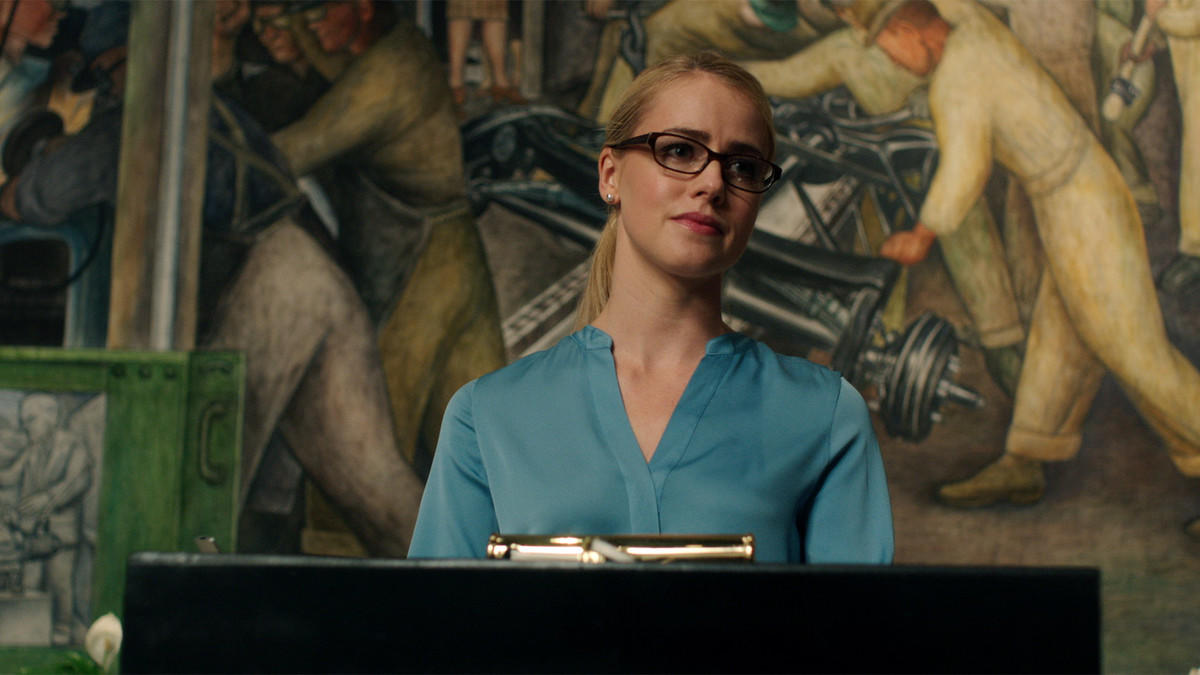
When it came to 12 Monkeys, the production shared an advantage with The Expanse: they were working off of good source material from which they could work. Terry Matalas noted that they “were lucky that our main character, Cassandra Railly, already was a strong female character from the original film.”
“However, we wanted to make her even more active in the series. We knew we wanted to put Cassie and Cole (our time travelling savage) on equal footing, so we accelerated her arc by the second act of the pilot.”
The production decided to add some additional characters to the television show beyond what had been seen in the film: Jennifer Goines, a mathematician who aids Railly as the two of them work to uncover a world-wide conspiracy.
Like the other productions (all of which were filmed in Toronto), Matalas noted that the burden lies with their casting directors to create a world that looks real: “You want to be organic as best you can. Our casting directors rise to the occasion and find the talent.”
The collective efforts from each show demonstrate that building a strong, diverse show is a much larger effort than simply hoping that a diverse cast of actors comes through the door to the casting office. Systemic changes must happen on every level, from the writers to the network to the showrunners. Syfy seems to have bought in to this, supporting showrunners who have brought diverse properties before them, following up by making sure that they’re looking for the right people to populate their worlds.
The channel appears to be paying attention to some of the larger arguments that have been directed at the motion picture industry as a whole by including a wider range of ethnicities and genders in their productions. The end result is a slate of shows which increasingly look much like the population from which they come from. This isn’t just a matter of paying lip service to various groups who feel underrepresented: it’s good business. Earlier this year, UCLA released a report, 2016 Hollywood Diversity Report: Busine$$ As Usual?, which found that “Films with relatively diverse casts enjoyed the highest global box office receipts and the highest median return on investment.”, while shows that featured higher levels of diversity amidst their casts tended to do much better with the highly sought after demographics: “Median 18-49 view ratings (as well as median household ratings among whites, black Latinos and Asian Americans) peaked for broadcast scripted shows featuring casts that were greater than 40 per cent minority.”
While science fiction has been celebrated as presenting diverse futures since the 1960s with Star Trek, the world has changed considerably in a half century, and with it, the futures that creators envision. With their latest slate of shows, Syfy has consciously pushed for more realistic looking worlds that we might someday inhabit.
